WebAssembly – or Wasm – has been warmly received since its first release in 2017, but our survey shows projects seem to be outstripping the capabilities of today’s tools and technologies and an overwhelming number of users hungry for fully-featured and stable Wasm projects.
Over a quarter of survey participants (30.77%) are using WASM in their cloud-native development projects with 37% planning to do so during the next 12 months.*
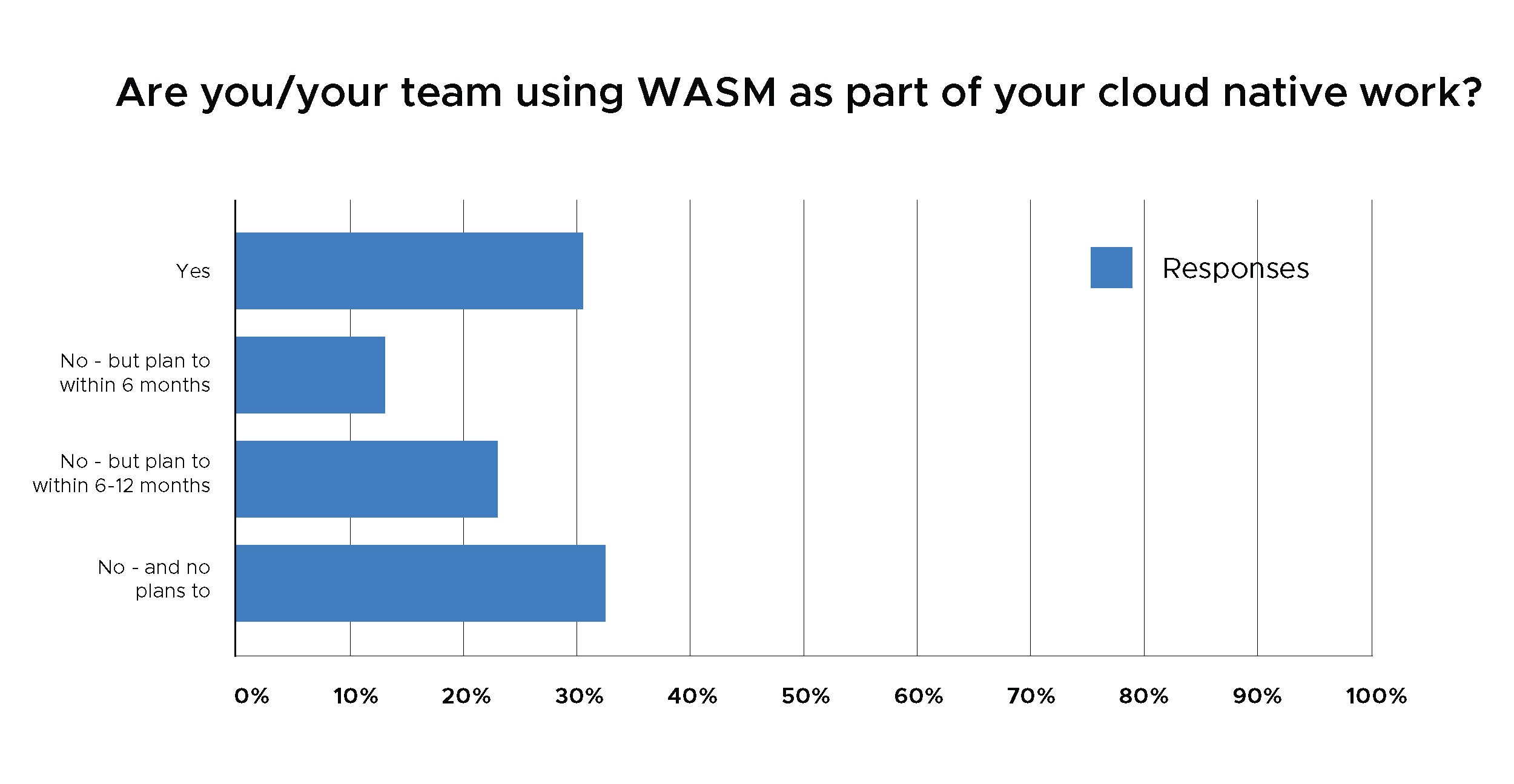
These numbers reflect general enthusiasm for Wasm, with 70% believing the runtime to be a disruptive emerging technology, which is not bad five years in even if production usage is still early days.
What’s driving Wasm’s positive reception? The promise of near-native performance for those building browser applications and the chance for developers to build high-speed web applications using their language of choice when targeting the browser or server.
Nearly two thirds, 63% of survey respondents, said they are both porting new applications using Wasm and migrating existing workloads, compared with 37% who said they were creating new applications only.
What are they building?
Server-side development is a hotbed: 42% are writing, or plan to develop, server-wide applications using Wasm and 48% are combining or planning to combine server-side work with coding client-side applications. Just 18% are focused purely on client/browser.

Wasm is being used, or is in the pipeline, on an array of applications and services where language choice is important and platform conditions can constrain performance. Serverless is a target for most of our participants (63%), followed by edge (54%) and web (52%).
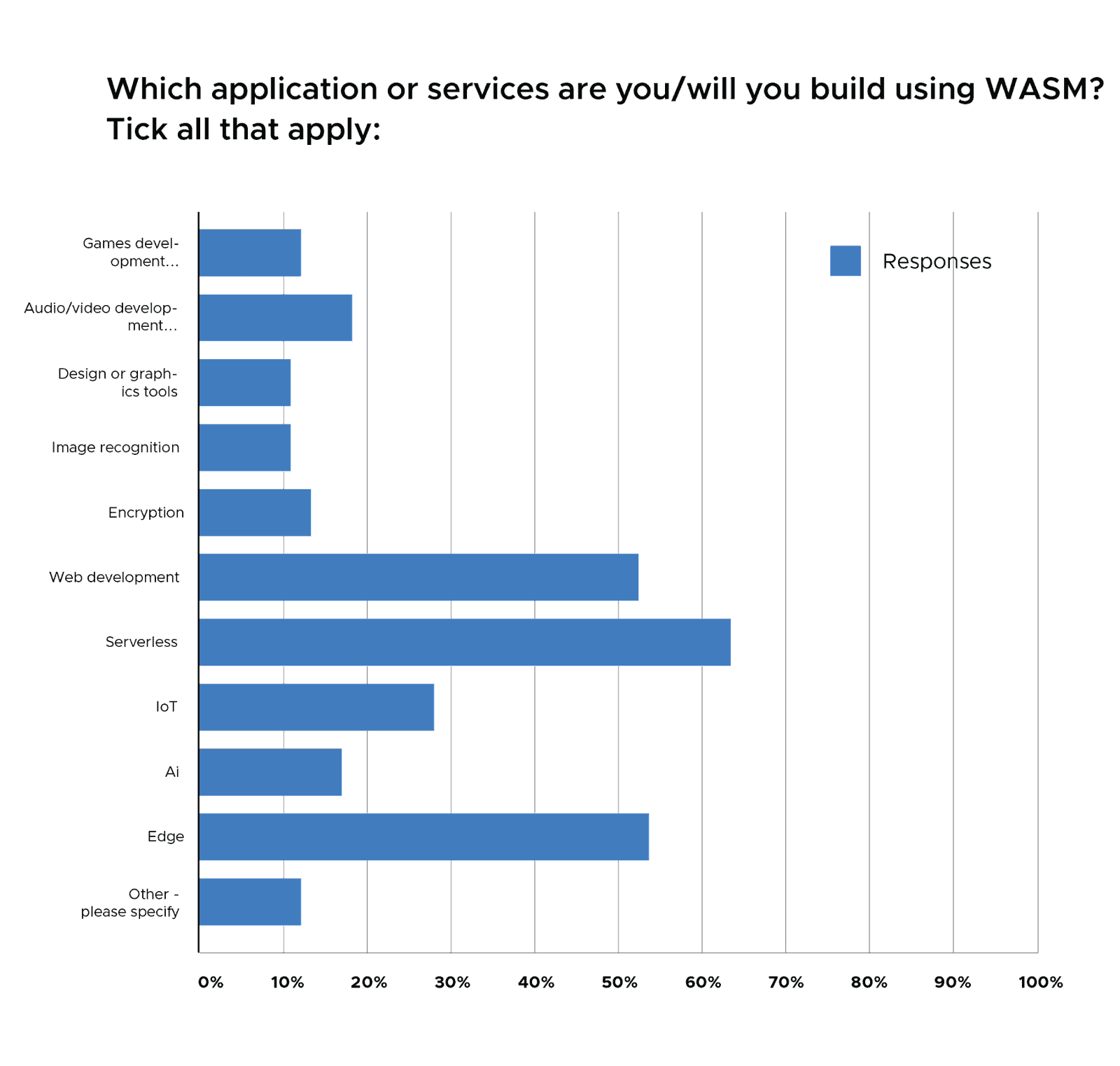
What benefits are developers seeking in these and other scenarios?
The results of our survey show that Wasm appears to be delivering on its promises. First, let’s look at results for accelerated performance, hitting that near-native dream for code execution. The biggest leap in performance, a 50% increase, was experienced by one-fifth of survey participants, while the biggest single group, 37%, said they saw a gain of 10% over existing performance.
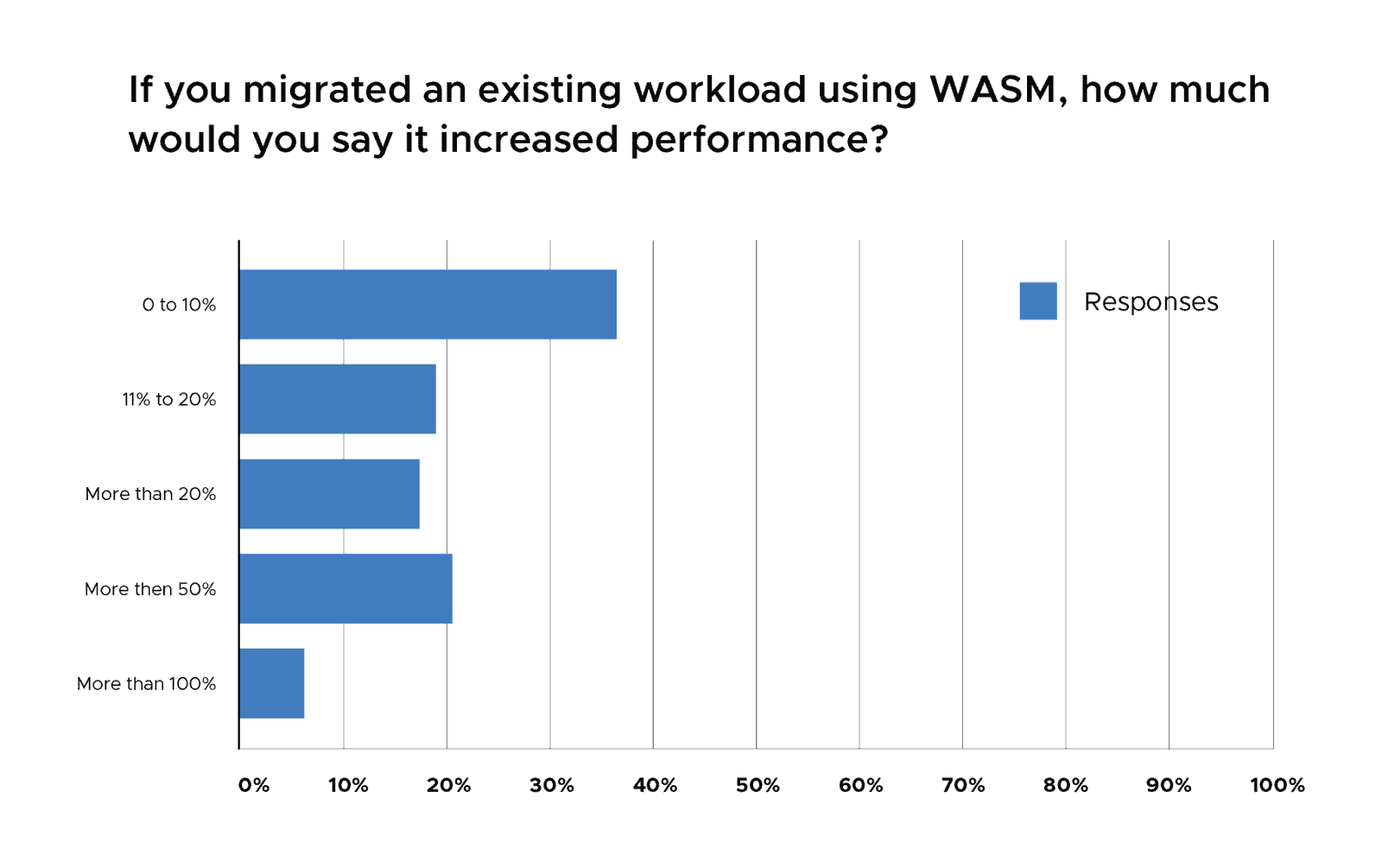
Cross-language appeal was a reality, too. We found 14 languages used in association with Wasm but three led the field: Rust (59%), Go (47%) and JavaScript (46%).
Indeed, developer productivity emerged as a leading reason for Wasm’s popularity. Asked what had attracted participants to the runtime write-once-run-anywhere application portability came top (78%) with native runtime performance on 70%. Both are key issues in the speed and ease of development and application maintenance in highly-distributed multi-cloud environments. Wasm’s sandboxed security model rounded out the top three, at 77%.
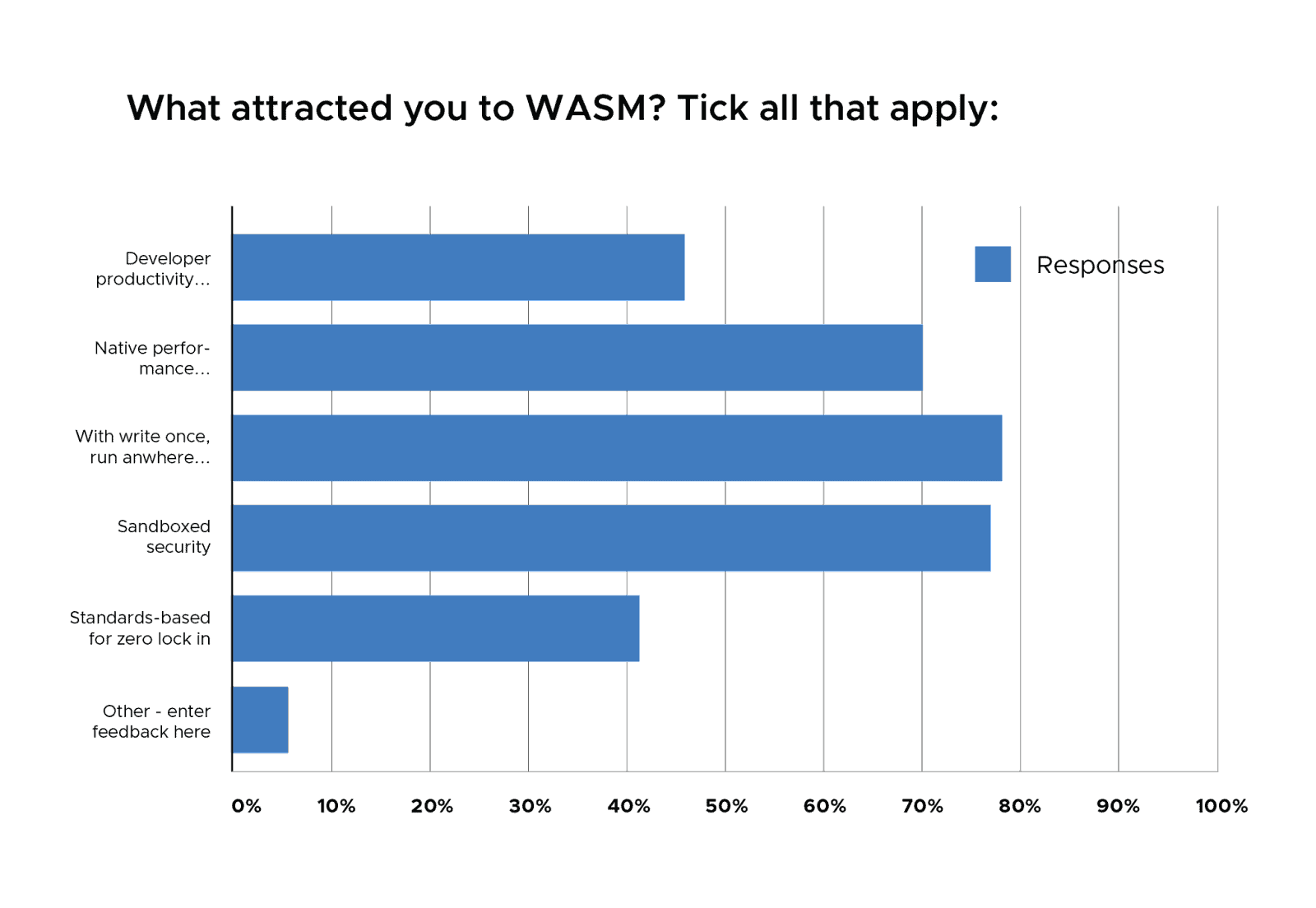
Adopting a grown-up posture
Despite the optimism and warm reception, developers are waiting for the Wasm industry and its technologies to stabilize. In fact, 33% of respondents had no plans to start working with Wasm.
Absence of maturity may be causing concerns that are helping delay uptake. The biggest barriers to adoption were tools and standards, ranked first and second by a significant margin at 46% and 45%, respectively.
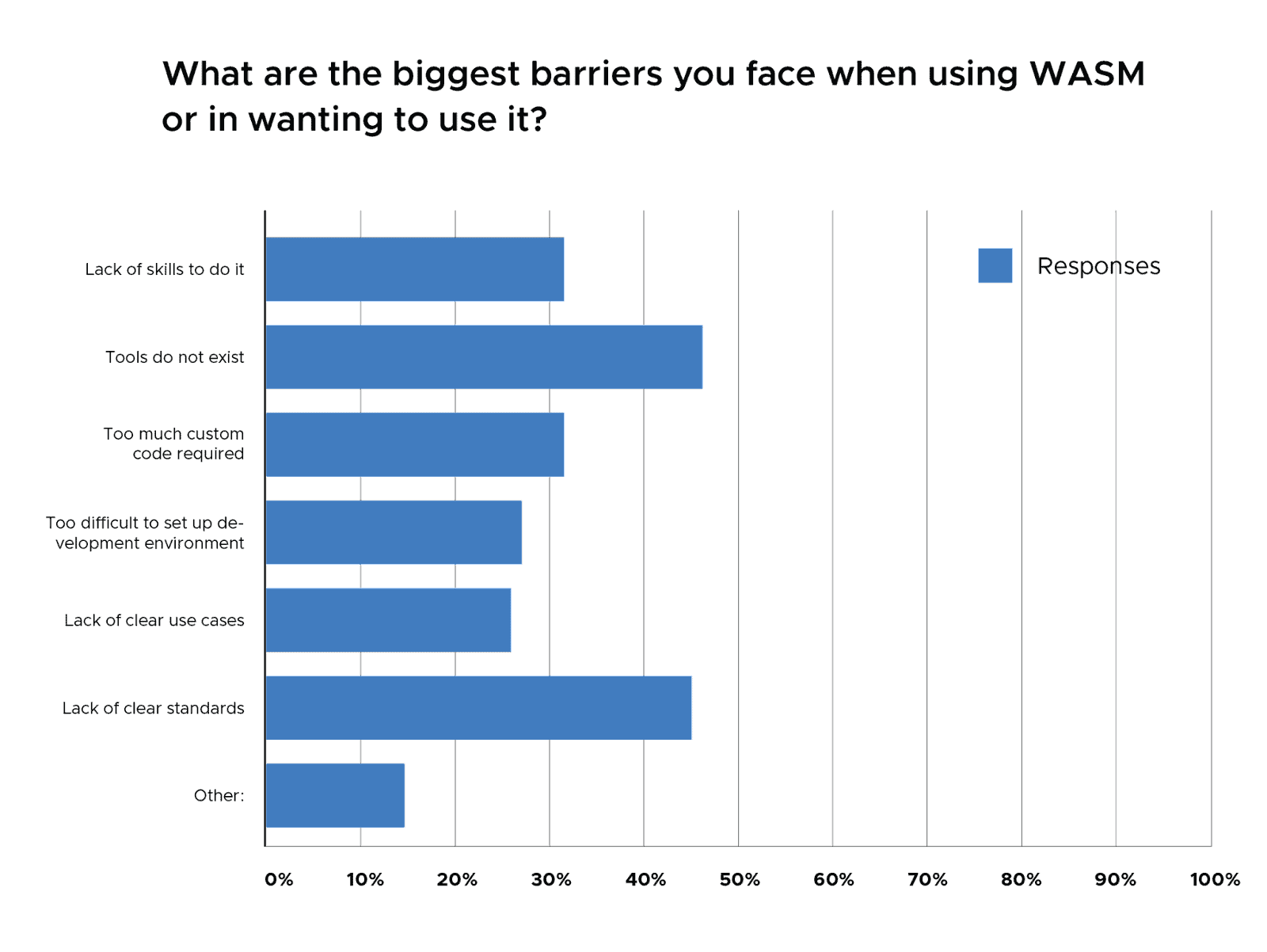
We asked participants to elaborate. Just over half, 56%, said Wasm developer tools are jointly missing features and are difficult to use. That was the single biggest obstacle. Close behind came slow development of industry standards by the World Wide Web Consortium (W3C) (48%). Language support was a leading issue, too. Despite WASM’s plurality, there’s a strong feeling that languages important to individual participants were either absent or only partially supported (38%).
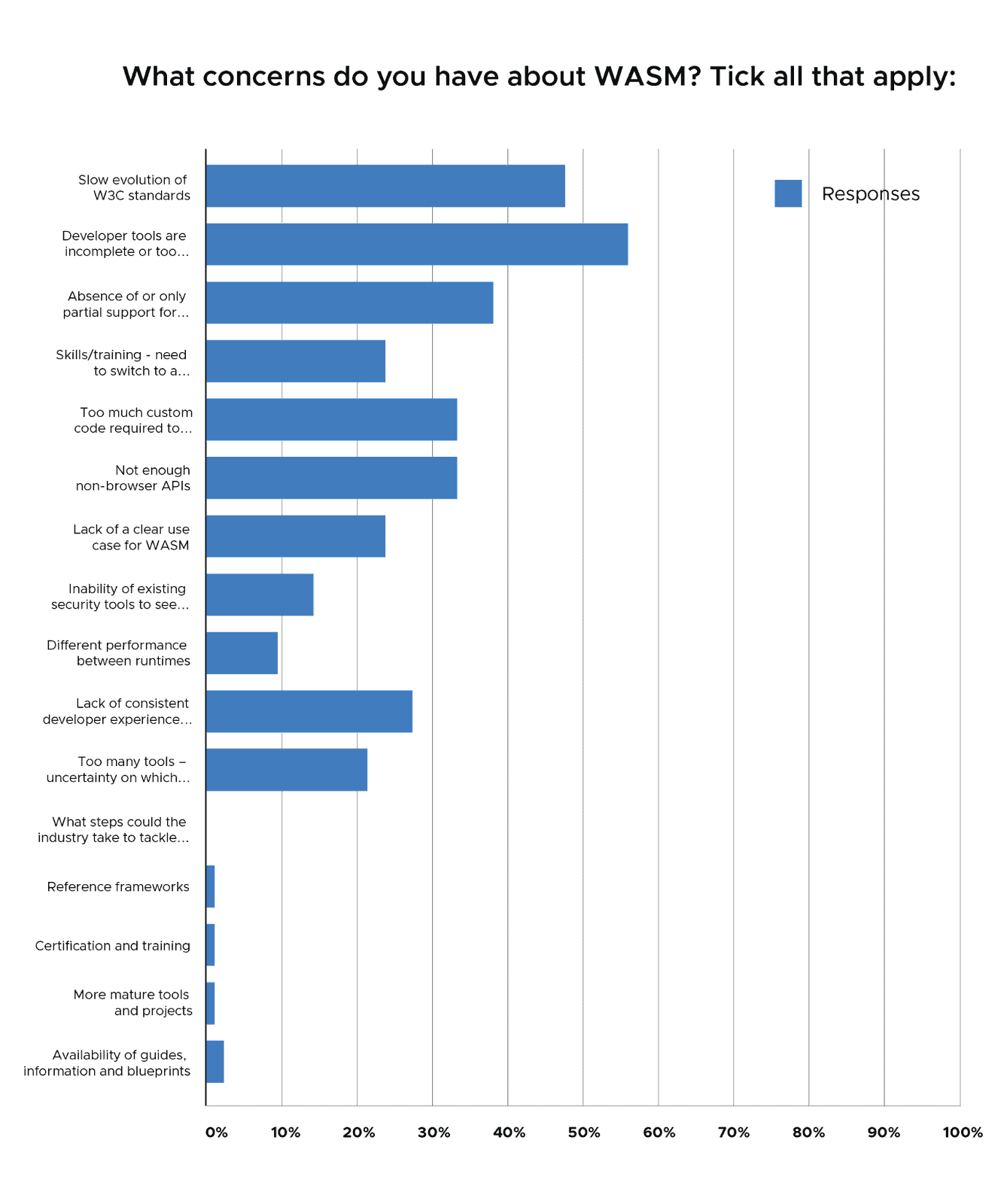
What should the industry do to tackle these challenges? Build fully-featured and stable Wasm tools and projects was the answer from 81% of respondents. This was the single biggest response to any one survey question – an indication of how widespread this problem is and how strongly people feel. There was a call from 60% for more leadership and advice from the industry with the development of Wasm programming guides and blueprints. Finally, 44% said the presence of reference frameworks would help them get their job done.
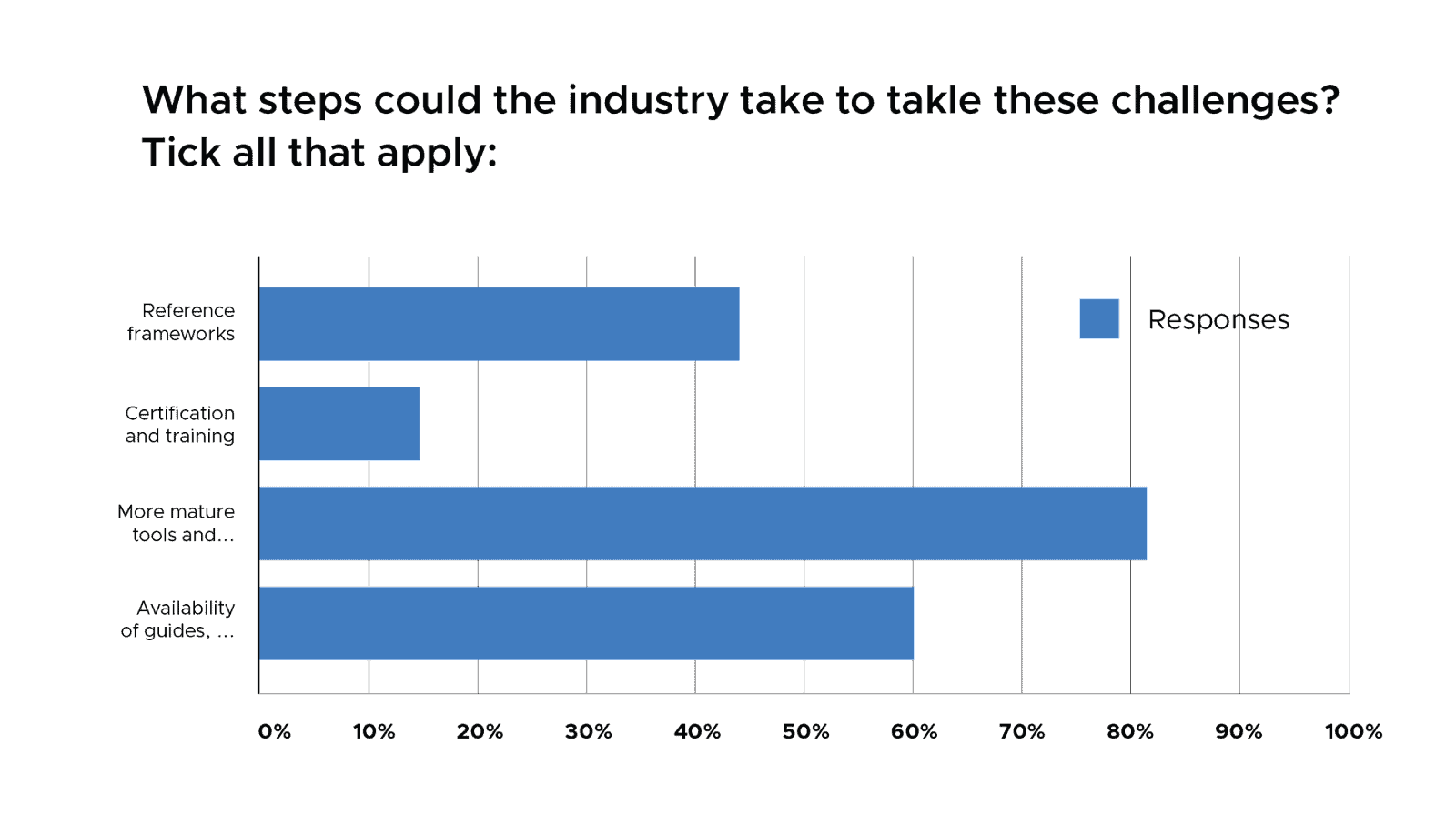
The microsurvey was designed by CNCF, conducted between September and October 2022 and received 93 responses.
Raw data from the survey can be found on GitHub.
To learn more, please join us at KubeCon + CloudNativeCon North America on 24-28 October 2022 by registering here.
*updated number as of November 9, 2022 based on new survey respondent
# # #